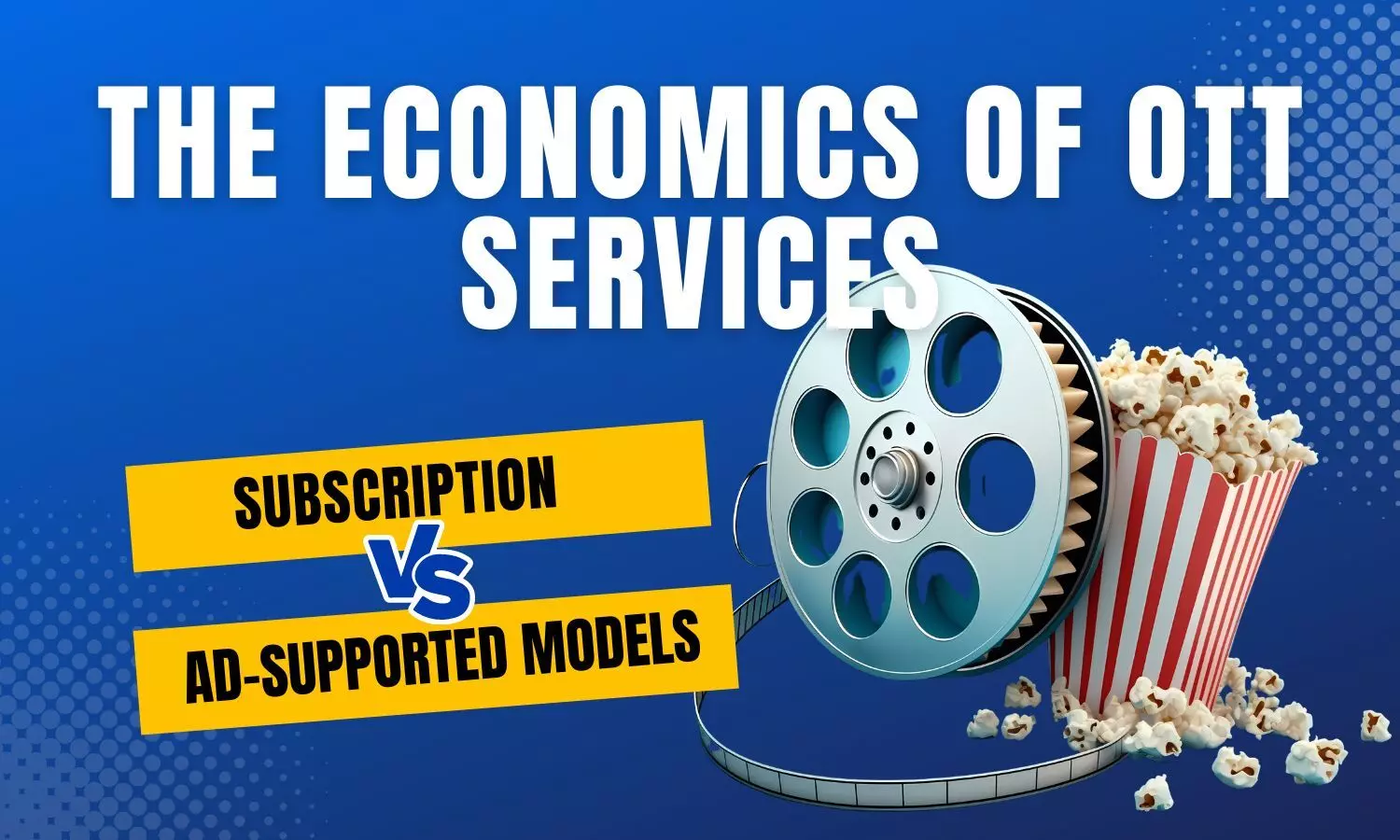The Economics of OTT Services: Subscription vs. Ad-Supported Models
The choice between SVoD and AVoD depends on factors like target audience, content costs, and revenue sources. While both the models have their own fair share of pros and cons, choosing a blend of both could be the key to success for OTT providers.
The Economics of OTT Services: Subscription vs. Ad-Supported Models

The manner of entertainment consumption has changed, thanks to OTT. A giant leap from cable TV, OTTs have become the new portable and easily accessible means of entertainment, transforming the viewing experiences of modern-day individuals. Given the growing appeal of on-demand viewing, various OTT giants have emerged which have become a staple in every household today. These include Netflix, Amazon Prime, Disney+Hotstar, ZEE5, SonyLIV amongst others.
The modern-day OTT platforms, which are dominating the entertainment landscape today, initially started with subscription-based models. Under this model, consumers are required to make a monthly, quarterly, or annual payment to access exclusive content. However, in response to evolving audience preferences, OTT platforms are going beyond subscription-based models and adopting ad-supported models. This move is intended to cater to the price-sensitive public and target sustained business growth. For example, Amazon has introduced ad-based offerings such as miniTV in addition to subscription-based Prime Video.
Subscription vs. ad-supported model
SVoD- Subscription video on demand
The subscription model requires consumers to make a monthly, quarterly, or annual fee to access premium content. Doing so allows them access to a diverse library of content and enjoy uninterrupted, ad-free viewing.
With periodic payments, over-the-top providers can more precisely project revenue and concentrate on making better content investment choices. Further, the unique original content of OTT platforms propels viewers to pay for premium, ad-free content. However, given the fact that the majority of OTT players are opting for this model makes it quite impractical and unsustainable for the consumers to pay for multiple platforms. This can result in consumers seeking other cheaper alternatives.
AVoD: Ad-supported video on demand
Ad-supported model offers content for free or at a minimal cost. In this setup, OTT platforms monetize their services by featuring ads from brands that aim to connect with a larger audience. Today, a number of OTT providers are shifting to AVoD models. For example, Aha Video offers both the SVoD and AVoD for the same content, while ZEE5 allows free viewing of selected shows and short videos.
Ad-supported video on demand attracts price-sensitive viewers, drawing a broader user base. Many users largely prefer the zero-cost option, even if it involves ads. Addressing this user behaviour and adopting an AVoD model will allow OTT providers to retain a steady stream of users who might otherwise avoid subscription fees.
While this model is surely beneficial for price-sensitive audiences, it exposes OTT providers to more unpredictable income streams. Ad revenue can vary significantly due to market conditions and advertiser demand, putting OTT players in a difficult position. Furthermore, they may have limitations in offering premium or exclusive content compared to subscription services.
Finding the balance
Whether to go with SVoD or AVoD is a choice for OTT providers to make. When selecting a model, it is essential to consider factors such as the target audience, content costs and revenue sources. Ideally, employing a combination of both models can help OTT services attract a diverse audience.

